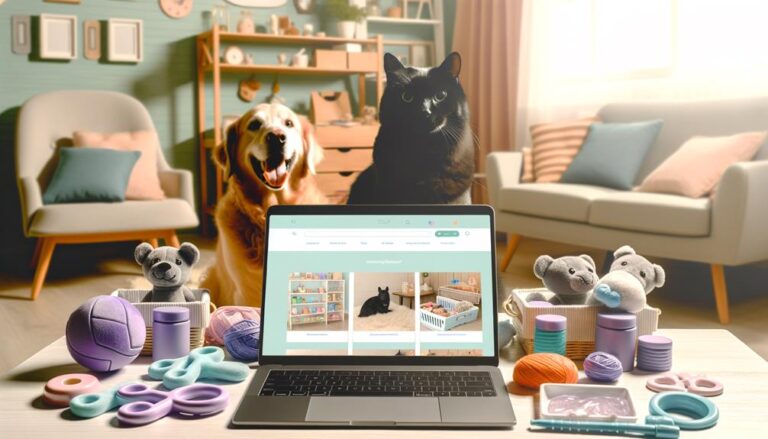To offer bike sharing consulting services as a side hustle, you'll need to start by defining your niche within the industry. This involves identifying the specific areas of bike sharing you'll specialize in, such as system planning, operations management, or marketing strategy. Understand the local market demand by researching the existing bike sharing systems in your area and the organizations involved.
Next, assess the competition by identifying other consulting services or experts offering similar services in your area. Analyze their strengths, weaknesses, and the services they offer to determine how you can differentiate your own services.
Identify key stakeholders in the bike sharing industry, including municipalities, bike sharing companies, and local businesses. Determine their needs and challenges in implementing or improving bike sharing systems. This will help you develop a consulting model that addresses their specific needs.
Develop a solid understanding of the consulting models that work best for your clients. This could include offering services such as feasibility studies, system design, implementation planning, or ongoing operations management. Create a menu of services that cater to different client needs and budgets.
Establish relationships with key stakeholders and begin marketing your services to municipalities, bike sharing companies, and local businesses. Utilize your professional network, industry events, and digital marketing channels to promote your services and attract clients.
Deliver high-quality consulting services to your clients by staying up-to-date on industry trends, best practices, and new technologies in bike sharing. Continuously evaluate and improve your services to ensure they meet the evolving needs of the bike sharing industry.
Key Takeaways
- Conduct thorough local demand analysis and competitor evaluation to identify opportunities in the bike sharing market.
- Develop a unique value proposition based on market research findings to differentiate services from competitors.
- Analyze demographics, behaviors, and preferences of potential clients to tailor services effectively and identify key client categories.
- Create a comprehensive suite of services based on target market understanding and develop customized packages for tailored solutions.
Entering the Bike Sharing Market
Entering the bike sharing market requires a deep dive into local demand, competitor analysis, and regulatory compliance.
Market research will reveal gaps in existing services and inform a unique value proposition.
Regulatory awareness is key to avoid operational hurdles. By doing so, you can secure a foothold in this competitive side hustle.
Evaluate the competition's market share and identify opportunities to innovate.
Develop a business plan that addresses regulatory requirements, insurance, and bike storage, ensuring long-term feasibility.
Identifying Your Target Clients
Identifying target clients for your side hustle involves analyzing their demographics, behaviors, and preferences to pinpoint who can benefit most from your skills.
You'll want to focus on individuals or businesses with specific needs that your side hustle can solve. By researching their needs and pain points, you'll be able to tailor your services to meet their specific requirements.
To better understand your potential clients, evaluate their goals and challenges, such as streamlining processes, finding affordable services, or enhancing existing products.
You'll also want to assess the types of individuals or organizations that could benefit from your expertise, including small business owners, entrepreneurs, and professionals.
Assessing Local Market Demand
To assess the viability of your bike-sharing side hustle, examine local market demand by analyzing factors such as population density, infrastructure, and existing transportation options. This assessment will help you understand customer preferences and identify potential gaps in the market. Conduct a competitive analysis to determine what bike-sharing services already exist in the area and how they operate.
| Market Factor | Impact on Bike-Sharing Demand |
|---|---|
| High population density | Increases demand for bike-sharing services as a convenient transportation option |
| Existing bike-friendly infrastructure | Supports bike-sharing demand by providing safe and accessible routes |
| Limited public transportation options | Enhances bike-sharing demand as a reliable alternative |
Understanding Bike Share Models
When starting a bike-sharing side hustle, defining the business model is a critical step. The choice between a station-based, dockless, or hybrid model impacts user convenience, operational efficiency, and environmental sustainability.
A station-based model provides organization and security but may restrict user flexibility, while a dockless model offers convenience but presents operational challenges, such as bike redistribution and parking regulation.
Evaluating bike share models requires consideration of their environmental implications. A hybrid model that incorporates elements of both station-based and dockless systems may provide a balance between user needs and operational sustainability.
Assessing the advantages and disadvantages of each model enables informed decision-making that aligns with business objectives while minimizing environmental impact. Careful evaluation of bike share types and their operational challenges is essential for creating an efficient and sustainable bike-sharing side hustle that meets local market demands.
Developing a Consulting Service
You're now ready to develop a consulting service that effectively supports bike sharing initiatives.
To start, you'll need to assess market demand and understand the specific needs of your target clients, whether they're municipalities, bike share operators, or other stakeholders.
Assessing Market Demand
When considering a side hustle, it's crucial to assess market demand to determine the viability of your venture. Analyze market trends to gauge interest in your product or service and identify patterns of growth. Conduct a competitor analysis to understand the competitive landscape and determine how your side hustle can differentiate itself from existing alternatives.
Your assessment should consider demographic factors, such as target audience age, income, and location, as well as consumer behavior and purchasing habits. By analyzing these factors, you'll be able to determine whether there's sufficient demand for your side hustle and identify areas where it can be improved or expanded.
A thorough market demand assessment will help you develop a side hustle that meets the unique needs of your target market, ensuring a successful and sustainable venture.
Building Service Offerings
With a clear understanding of your side hustle's target market, you can now focus on crafting a comprehensive suite of services that cater to their unique needs.
Developing service differentiation strategies will help you stand out from competitors, highlighting your expertise and showcasing the value you bring to clients. This may involve creating customized packages, conducting client assessments, or providing implementation and management guidance.
As you build your service offerings, focus on value proposition development, clearly articulating the benefits of your services and how they'll help clients achieve their goals.
By quantifying the benefits of your services, you can create a compelling case for why clients should invest in your side hustle.
Creating a Pricing Strategy
Developing an effective pricing strategy for your side hustle is essential to attract and retain customers while guaranteeing the venture's long-term sustainability and profitability.
As you create your pricing strategy, you'll need to conduct a thorough cost analysis to determine the expenses associated with running your side hustle. This includes the cost of materials, equipment, marketing, and any necessary licenses or certifications.
You'll also want to conduct competitive benchmarking to see how your prices stack up against other similar side hustles in your area. Consider the prices of comparable services or products to guarantee your prices are competitive.
Additionally, think about offering tiered pricing plans or discounts for frequent customers to incentivize loyalty and generate revenue.
When setting your prices, balance the need to generate revenue with the need to provide value to your customers. By pricing your side hustle correctly, you can create a system that benefits both you and your customers while generating a profit.
Building a Professional Network
As you refine your expertise as a bike sharing consultant, you'll want to expand your professional influence by building relationships with experts who can offer advice, referrals, or partnership opportunities. Constructing a robust professional network enhances your credibility and keeps you updated on best practices in sustainable urban mobility.
Attend relevant events, such as transportation and smart city conferences, to connect with urban planners, bike advocates, and smart city professionals. These gatherings provide opportunities to nurture strategic relationships and stay informed about trends affecting the bike sharing industry.
Through networking, seek partnerships with companies or organizations that share your commitment to sustainable transportation. Collaborations with like-minded experts can elevate your consulting services and create new business opportunities.
Strategic networking amplifies your impact as a consultant while contributing to the broader discussion on environmentally friendly transportation solutions.
Marketing Your Expertise Online
Establishing a strong online presence is crucial for promoting your side hustle as a bike sharing consultant. A professional website is a must-have, as it allows you to highlight your skills, experience, and services offered in sustainable urban mobility solutions.
Utilize digital marketing tools such as social media, SEO, and content marketing to reach a wider audience interested in bike sharing consulting services. Create valuable content that shares your expertise in bike sharing and urban mobility, and engage with your online community by responding to comments and participating in relevant discussions.
Collaborate with influencers, industry leaders, or like-minded organizations to expand your network and credibility in the field. Monitor your online presence regularly, making adjustments to your digital marketing strategy as needed to stay competitive.
Preparing for Client Consultations
Preparing for Bike Sharing Consulting Client Consultations
With your online presence established and digital marketing strategy in place, your focus shifts to preparing for consultations with potential clients interested in your bike sharing consulting services.
To effectively prepare, reflect on client expectations and develop a solid consultation preparation plan, focusing on:
- Familiarizing yourself with the client's organization, goals, and current urban mobility initiatives to understand their needs and expectations.
- Reviewing your expertise and value proposition in bike sharing consulting, such as knowledge of sustainable transportation systems or bike-sharing program implementation.
- Developing a consultation framework outlining the discussion scope, key topics, and desired outcomes to ensure a productive meeting.
- Preparing thoughtful, open-ended questions to gather insights into the client's needs and pain points related to urban mobility and bike sharing.
Measuring Business Performance Metrics
As a bike-sharing consultant, you'll need to measure the effectiveness of your services by tracking key performance indicators (KPIs) that reveal the health and growth potential of your clients' businesses.
You'll focus on metrics such as monthly active users, which highlight the system's popularity and user engagement, and revenue growth rate, which indicates financial sustainability.
Key Performance Indicators
To evaluate the success of online courses teaching entrepreneurship, instructors rely on key performance indicators (KPIs) that measure business growth, student engagement, and overall learning experience.
As an online course creator, selecting and monitoring the right KPIs is crucial to refine your teaching methods and improve student outcomes.
Some essential KPIs for online entrepreneurship courses include:
- Student engagement rate: measured through metrics such as lesson completion rates, assignment submissions, and participation in online discussions.
- Course completion rate: tracking the percentage of students who finish the course to assess its overall effectiveness.
- Student satisfaction rate: gauged through surveys and feedback forms to evaluate the course's quality and relevance.
- Knowledge retention rate: measured through quizzes and assessments to determine how well students retain the information.
Monthly Active Users
As a bike-sharing consultant, tracking the monthly active users (MAU) of your clients' programs can help you gauge their performance and provide actionable advice to improve their services. Analyzing MAU alongside other key performance indicators can inform your guidance on refining user engagement strategies, improving customer satisfaction, and ultimately driving growth.
A decline in MAU may prompt you to recommend reassessing user retention techniques, such as offering incentives or updating mobile apps. Conversely, a growing MAU can indicate the success of a bike-sharing program, which not only benefits the business but also contributes to a more environmentally friendly transportation system.
Revenue Growth Rate
Monitoring the revenue growth rate of your side hustle complements analysis of customer acquisition and retention rates, providing a more thorough picture of your business's financial health and its potential to drive sustainable income.
As you track revenue growth, you'll gain insight into the effectiveness of your pricing strategy and the popularity of your services.
To paint a clearer picture, consider the following key factors that influence revenue growth rate:
- Diversification of revenue streams, such as offering premium services, packages, or affiliate marketing
- Pricing strategy and its impact on customer demand
- Profitability analysis to identify areas of inefficiency and opportunities for cost reduction
- Seasonal fluctuations in customer demand and how to adapt pricing and services accordingly
Conclusion
As a bike sharing consulting expert, you've discovered a lucrative side hustle opportunity while promoting eco-friendly transportation.
By navigating the market, identifying key clients, and fine-tuning services, you've effectively transformed your expertise into a business that benefits both your profits and the environment.
The strong professional network and digital presence you've established allow you to maintain momentum while leaving a lasting impact on the bike sharing industry.
















































0
View comments